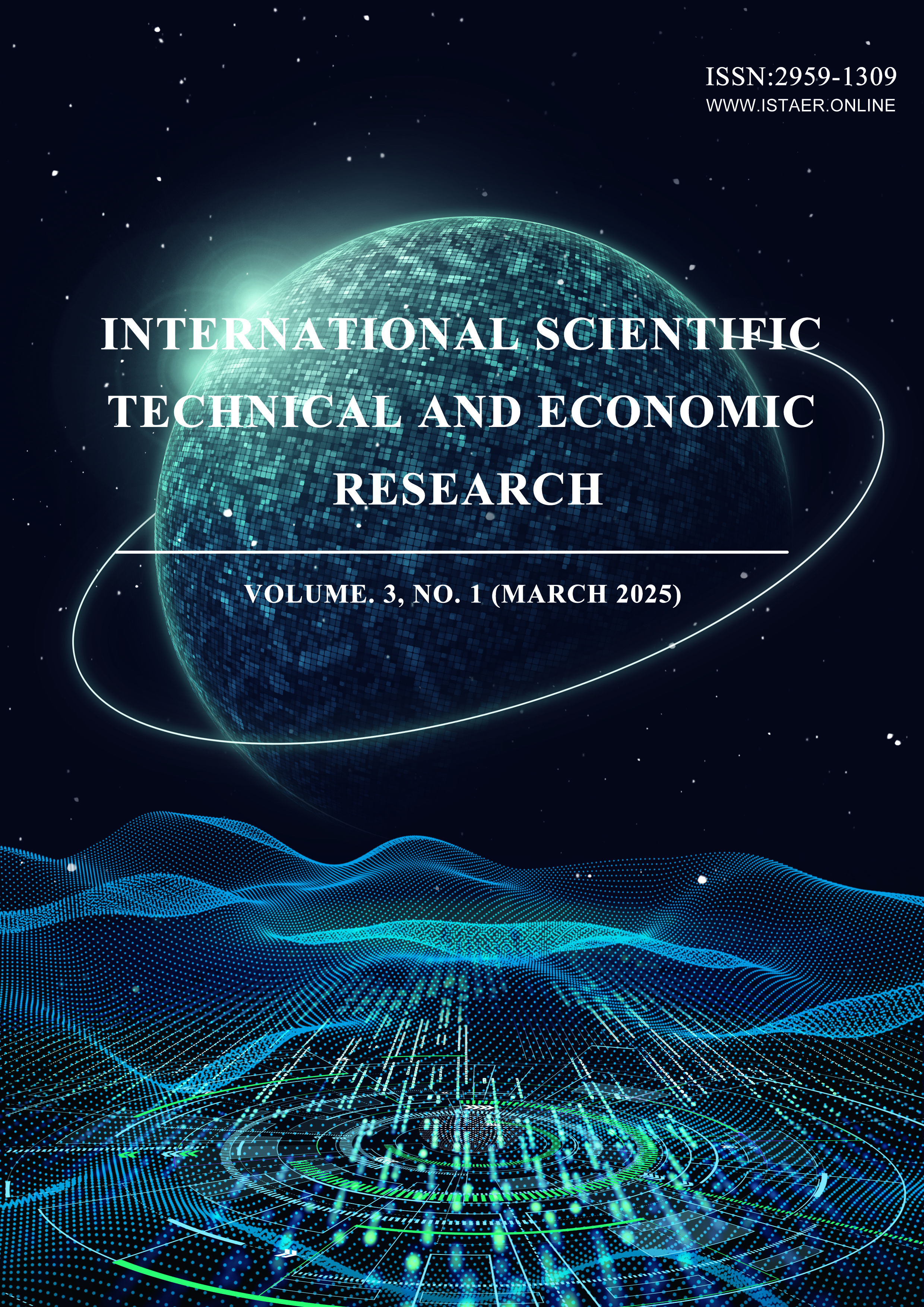Research on the classification of dimensional performance and feature extraction of primary school students' core literacy in science curriculum
DOI:
https://doi.org/10.71451/ISTAER2510Keywords:
Science Curriculum, Core Competencies, Grade-Level Characteristics, Structure, Logistic Regression AnalysisAbstract
The core competency-oriented curriculum reform has become an important issue in the current education field. In order to objectively evaluate the development status of primary school students' core literacy in science courses, this study used cluster analysis method to classify students' core literacy in science and its four dimensions into three different development levels based on the interview performance of 235 students. The results of discriminant analysis show that there are significant differences between the three types of student groups, and the classification accuracy reaches 94.5%, which fully verifies the scientificity and reliability of the classification standard. On this basis, combined with the specific performance of various types of students, this study quantitatively and qualitatively described the primary school science core literacy and its four dimensions of development level, and further revealed the stage characteristics of the development of primary school science core literacy. In addition, based on the performance criteria that have been constructed, this study deeply explores the development trajectory of students' science core literacy. Through descriptive statistics, analysis of variance (ANOVA), chi-square test and multinomial logistic regression analysis, it was found that students 'performance in science core literacy and its four dimensions showed a progressive trend with the improvement of grade, and there were significant differences between different grades. Specifically, the lower grade students mainly performed at the first level, the middle grade students mainly performed at the second level, and the upper grade students mostly achieved the third level. This finding not only verified the growth law of science core literacy, but also provided empirical support for the phased training objectives of primary school science education.
**************** ACKNOWLEDGEMENTS****************
Thanks for the data support provided by National-level Innovation Program Project Fund "Research on Seedling Inspection Robot Technology Based on Multi-source Information Fusion and Deep Network" (No.: 202410451009); Jiangsu Provincial Natural Science Research General Project (No.: 20KJB530008); China Society for Smart Engineering "Research on Intelligent Internet of Things Devices and Control Program Algorithms Based on Multi-source Data Analysis" (No.: ZHGC104432); China Engineering Management Association "Comprehensive Application Research on Intelligent Robots and Intelligent Equipment Based on Big Data and Deep Learning" (No.: GMZY2174); Key Project of National Science and Information Technology Department Research Center National Science and Technology Development Research Plan (No.: KXJS71057); Key Project of National Science and Technology Support Program of Ministry of Agriculture (No.: NYF251050).
References
[1] Organization, W. H., Educational, U. N., Educational, U. N., Scientific, & Organization, C. (2021). Making every school a health-promoting school: Implementation guidance. World Health Organization.
[2] Zhan, Z., Shen, W., Xu, Z., Niu, S., & You, G. (2022). A bibliometric analysis of the global landscape on STEM education (2004-2021): towards global distribution, subject integration, and research trends. Asia Pacific Journal of Innovation and Entrepreneurship, 16(2), 171-203. DOI: https://doi.org/10.1108/APJIE-08-2022-0090
[3] Kim, Y., & Choi, T.-H. (2025). The influence of the Programme for International Student Assessment on educational governance situated in the institutional setting of South Korea. Policy Futures in Education, 23(1), 31-47. DOI: https://doi.org/10.1177/14782103231192741
[4] Suprapto, N., Prahani, B., & Cheng, T. (2021). Indonesian curriculum reform in policy and local wisdom: Perspectives from science education. Jurnal Pendidikan IPA Indonesia, 10(1), 69-80. DOI: https://doi.org/10.15294/jpii.v10i1.28438
[5] Marginson, S. (2022). ‘All things are in flux’: China in global science. Higher Education, 83(4), 881-910. DOI: https://doi.org/10.1007/s10734-021-00712-9
[6] Amani, S. (2023). Exploring educational transitions and cultural adaptations: Afghan female undergraduate student’s experiences in transitioning from Afghanistan to Bangladesh Brac University].
[7] Doğan, B., & Bergougui, B. Does Circular Economy Really Matter for Carbon Neutrality? Role Of Green Total Factor Productivity, Green Technology Innovation, and Fiscal Technology Expenditure. Role Of Green Total Factor Productivity, Green Technology Innovation, and Fiscal Technology Expenditure.
[8] Barker, M. R., Hansen, R. C., & Hammer, L. (2023). Handbook of Research on Critical Issues and Global Trends in International Education. IGI Global. DOI: https://doi.org/10.4018/978-1-6684-8795-2
[9] Erdemir, B., & Wu, Q. (2023). Stakeholder Perspectives on Barriers for Equitable Higher Education Admissions: Cases of Turkey and China. Annual Review of Comparative and International Education 2022, 25-48. DOI: https://doi.org/10.1108/S1479-36792023000046B003
[10] COPPI, M., FIALHO, I., & CID, M. (2025). SCIENTIFIC LITERACY: A LOOK AT ITS DIFFERENT INTERPRETATIONS. Educação em Revista, 41, e48737. DOI: https://doi.org/10.1590/0102-469848737
[11] Zhao, T., Chen, G., Gatewongsa, T., & Busababodhin, P. (2024). Forecasting Agricultural Trade Based on TCN-LightGBM Models: A Data-Driven Decision. Research on World Agricultural Economy, 6(1), 207–221. https://doi.org/10.36956/rwae.v6i1.1429 DOI: https://doi.org/10.36956/rwae.v6i1.1429
[12] Santos, Í., & Centeno, V. G. (2023). Inspirations from abroad: The impact of PISA on countries’ choice of reference societies in education. Compare: A Journal of Comparative and International Education, 53(2), 269-286. DOI: https://doi.org/10.1080/03057925.2021.1906206
[13] Teig, N., Scherer, R., & Olsen, R. V. (2022). A systematic review of studies investigating science teaching and learning: over two decades of TIMSS and PISA. International Journal of Science Education, 44(12), 2035-2058. DOI: https://doi.org/10.1080/09500693.2022.2109075
[14] PEI, X., & ZHENG, T. (2021). Comparative Study on Development of Science Education Worldwide: Advance in Ideas, Themes and Practice. Bulletin of Chinese Academy of Sciences (Chinese Version), 36(7), 771-778.
[15] Shahjahan, R. A., Estera, A. L., Surla, K. L., & Edwards, K. T. (2022). “Decolonizing” curriculum and pedagogy: A comparative review across disciplines and global higher education contexts. Review of Educational Research, 92(1), 73-113. DOI: https://doi.org/10.3102/00346543211042423
Downloads
Published
Issue
Section
License
Copyright (c) 2025 International Scientific Technical and Economic Research

This work is licensed under a Creative Commons Attribution-NonCommercial-NoDerivatives 4.0 International License.
This work is licensed under the Creative Commons Attribution International License (CC BY 4.0).




